- Home
- Ursula K. Le Guin
Always Coming Home
Always Coming Home Read online
BOOKS BY URSULA K. LE GUIN
Novels
The Telling
Tehanu
Always Coming Home
The Eye of the Heron
The Beginning Place
Malafrena
Very Far Away from Anywhere Else
The Word for World is Forest
The Dispossessed
The Lathe of Heaven
The Farthest Shore
The Tombs of Atuan
A Wizard of Earthsea
The Left Hand of Darkness
City of Illusions
Planet of Exile
Rocannon’s World
Short Stories
Unlocking the Air
Four Ways To Forgiveness
A Fisherman of the Inland Sea
Searoad
Buffalo Gals
The Compass Rose
Orsinian Tales
The Wind’s Twelve Quarters
Poetry and Criticism
Sixty Odd
Steering the Craft
Going Out with Peacocks
Dancing at the Edge of the World
Wild Oats and Fireweed
Hard Words
The Language of the Night
Wild Angels
University of California Press
Berkeley and Los Angeles, California
“The Trouble with the Cotton People,” copyright © 1984 by Ursula K. Le Guin, first appeared in The Missouri Review, vol. 7, no. 2; reprinted in Best Science Fiction of the Year, vol. 2, edited by Gardner Dozois.
“The Visionary,” copyright © 1984 by Ursula K. Le Guin, first appeared in Omni; reprinted as The Visionary: The Life Story of Flicker of the Serpentine in Capra Back-to-Back, vol. I, Capra Press.
“Dira,” copyright © 1984 by Ursula K. Le Guin, first appeared in Parabola: Myth and the Quest for Meaning, vol. 9, Winter.
“Time in the Valley,” copyright © 1985 by Ursula K. Le Guin, first appeared in The Hudson Review: A Magazine of Literature and the Arts, vol. 37, no. 4, Winter 1984-85.
“It Was Never Really Different,” copyright © 1985 by Ursula K. Le Guin, first appeared in Whole Earth Review, July 1985.
“A Song Used in Chumo When Damming a Creek or Diverting Water to a Holding Tank for Irrigation,” copyright © 1985 by Ursula K. Le Guin, first appeared in Whole Earth Review, July 1985.
“A Bay Laurel Song,” copyright © 1985 by Ursula K. Le Guin, first appeared in Whole Earth Review, July 1985.
“An Exhortation from the Second and Third Houses of the Earth,” copyright © 1985 by Ursula K. Le Guin, first appeared in Whole Earth Review, July 1985.
First California Paperback Printing 2001
ALWAYS COMING HOME. Copyright © 1985 by Ursula K. Le Guin. All rights reserved. Printed in the United States of America. No part of this book may be used or reproduced in any manner whatsoever without written permission except in the case of brief quotations embodied in critical articles and reviews.
Designer: Helene Berinsky
* * *
Library of Congress Cataloging in Publication Data
Le Guin, Ursula K., 1929—
Always coming home / author, Ursula K. Le Guin; composer, Todd Barton; artist, Margaret Chodos-Irvine; George Hersh, geomancer; maps drawn by the author.
p. cm.—(California fiction)
ISBN 0-520-22735-2 (alk. paper)
1. California—Fiction. I. Barton, Todd. II. Chodos-Irvine, Margaret. III. Hersh, George. IV. Title. V. Series
PS3562.E42 A79 2001
813'.54—dc21
00-023409
Printed in the United States of America
10 9 08 07 06 05 04
10 9 8 7 6 5 4 3
The paper used in this publication is both acid-free and totally chlorine-free (TCF). It meets the minimum requirements of ANSI/NISO Z39.48-1992 (R 1997) (Permanence of Paper).
Contents
A FIRST NOTE
THE QUAIL SONG
TOWARDS AN ARCHAEOLOGY OF THE FUTURE
STONE TELLING, Part One
THE SERPENTINE CODEX CHART OF THE NINE HOUSES
WHERE IT IS
PANDORA WORRIES ABOUT WHAT SHE IS DOING: THE PATTERN
SOME STORIES TOLD ALOUD
Some Stories Told Aloud One Evening…
Shahugoten
The Keeper
Dried Mice
Dira
POEMS, First Section
HOW TO DIE IN THE VALLEY
PANDORA SITTING BY THE CREEK
FOUR ROMANTIC TALES
The Miller
Lost
The Brave Man
At the Springs of Orlu
POEMS, Second Section
FOUR HISTORIES
Old Women Hating
A War with the Pig People
The Town of Chumo
The Trouble with the Cotton People
PANDORA WORRYING ABOUT WHAT SHE IS DOING: SHE ADDRESSES THE READER WITH AGITATION
TIME AND THE CITY
The City
A Hole in the Air
Big Man and Little Man
Beginnings
Time in the Valley
STONE TELLING, Part Two
DRAMATIC WORKS
A Note on the Valley Stage
The Wedding Night at Chukulmas
The Shouting Man, the Red Woman, and the Bears
Tabetupah
The Plumed Water
Chandi
PANDORA, WORRYING ABOUT WHAT SHE IS DOING, FINDS A WAY INTO THE VALLEY THROUGH THE SCRUB OAK
DANCING THE MOON
POEMS, Third Section
EIGHT LIFE STORIES
The Train
She Listens
Junco
The Bright Void of the Wind
White Tree
The Third Child’s Story
The Dog at the Door
The Visionary: The Life Story of Flicker of the Serpentine of Telina-na
SOME BRIEF VALLEY TEXTS
PANDORA CONVERSES WITH THE ARCHIVIST OF THE LIBRARY OF THE MADRONE LODGE AT WAKWAHA-NA
DANGEROUS PEOPLE
A Note about the Novel
Chapter Two
PANDORA GENTLY TO THE GENTLE READER
STONE TELLING, Part Three
Messages Concerning the Condor
About a Meeting Concerning the Warriors
POEMS, Fourth Section
From the People of the Houses of Earth in the Valley
THE BACK OF THE BOOK
LONG NAMES OF HOUSES
SOME OF THE OTHER PEOPLE OF THE VALLEY
I. Animals of the Obsidian
II. Animals of the Blue Clay
KINFOLK
LODGES, SOCIETIES, ARTS
WHAT THEY WORE IN THE VALLEY
WHAT THEY ATE
KESH MUSICAL INSTRUMENTS
MAPS
THE WORLD DANCE
THE SUN DANCE
ABOUT THE TRAIN
SOME NOTES ON MEDICAL PRACTICES
A TREATISE ON PRACTICES
PLAYING
SOME GENERATIVE METAPHORS
THREE POEMS BY PANDORA
LIVING ON THE COAST, ENERGY, AND DANCING
LOVE
WRITTEN KESH
Alphabet and Pronunciation
THE MODES OF EARTH AND SKY
A NOTE AND A CHART CONCERNING NARRATIVE MODES
SPOKEN AND WRITTEN LITERATURE
PANDORA NO LONGER WORRYING
GLOSSARY
Kesh Numbers
STAMMERSONG
A First Note
THE PEOPLE IN this book might be going to have lived a long, long time from now in Northern California.
The main part of the book is the
ir voices speaking for themselves in stories and life-stories, plays, poems, and songs. If the reader will bear with some unfamiliar terms they will all be made clear at last. Coming at my work as a novelist, I thought it best to put many of the explanatory, descriptive pieces into a section called The Back of the Book, where those who want narrative can ignore them and those who enjoy explanations can find them. The glossary may also be useful or amusing.
The difficulty of translation from a language that doesn’t yet exist is considerable, but there’s no need to exaggerate it. The past, after all, can be quite as obscure as the future. The ancient Chinese book called Tao teh ching has been translated into English dozens of times, and indeed the Chinese have to keep retranslating it into Chinese at every cycle of Cathay, but no translation can give us the book that Lao Tze (who may not have existed) wrote. All we have is the Tao teh ching that is here, now. And so with translations from a literature of the (or a) future. The fact that it hasn’t yet been written, the mere absence of a text to translate, doesn’t make all that much difference. What was and what may be lie, like children whose faces we cannot see, in the arms of silence. All we ever have is here, now.
THE QUAIL SONG
From the Summer Dance.
In the fields by the river
from the meadows by the river
from the fields by the river
in the meadows by the river
two quail run
Run two quail
rise two quail
two quail run
two quail rise
from the meadows by the river
Towards an Archaeology of the Future
HOW THE PATIENT scientist feels when the shapeless tussocks and vague ditches under the thistles and scrub begin to take shape and come clear: this was the outer rampart—this the gateway—that was the granary! We’ll dig here, and here, and after that I want to look at that lumpy bit on the slope…How they know true glory when a thin disk slips through the fingers with the sifted dirt, and cleared with the swipe of a thumb shows, stamped in the fragile bronze, the horned god! How I envy them their shovels and sieves and tape measures, all their tools, and their wise, expert hands that touch and hold what they find! Not for long; they’ll give it to the museum, of course; but they did hold it for a moment in their hands.
I found, at last, the town I had been hunting for. After digging in several wrong places for over a year and persisting in several blockheaded opinions—that it must be walled, with one gate, for instance—I was studying yet once more the contours of my map of the region, when it dawned as slowly and certainly as the sun itself upon me that the town was there, between the creeks, under my feet the whole time. And there was never a wall; what on earth did they need a wall for? What I had taken for the gate was the bridge across the meeting of the creeks. And the sacred buildings and the dancing place not in the center of town, for the center is the Hinge, but over in their own arm of the double spiral, the right arm, of course—there in the pasture below the barn. And so it is, and so it is.
But I can’t go digging there and hope to find the curved fragment of a roof tile, the iridescent foot of a wine goblet, the ceramic cap of a solar battery, or a little coin of the gold of California, the same, for gold rusts not, that was weighed out in Placervilie and spent on whores or real estate in Frisco and then perhaps was a wedding ring awhile and then went hidden in a vault deeper than the mine it came from until all security proved illfounded, and now reshaped, this time round, into a curl-rayed sun and given in honor to a skilful artisan: no, I won’t find that. It isn’t here. That little sun of gold is not, as they say, dwelling in the Houses of the Earth. It is in thin air, in the wilderness that lies beyond this day and night, the Houses of the Sky. My gold is in the shards of the broken pot at the end of the rainbow. Dig there! What will you find? Seeds. Seeds of the wild oats.
I can walk in the wild oats and the thistles, between the houses of the little town I was looking for, Sinshan. I can cross the Hinge and come onto the dancing place. There, about where that Valley oak is now, will be Obsidian, in the northeast; the Blue Clay quite close to it, dug into the hillside, the northwest; closer to me, towards the center, Serpentine of the Four Directions; then the two Adobes on a curve down towards the creek, southeast, southwest. They’ll have to drain this field, if they build the heyimas, as I think they do, underground, only the pyramidal roofs with their clerestories elevated, and the ornamented ends of the entrance ladder sticking out of the top. I can see that well enough. All kinds of seeing with the mind’s eye is allowed me here. I can stand here in the old pasture where there’s nothing but sun and rain, wild oats and thistles and crazy salsify, no cattle grazing, only deer, stand here and shut my eyes and see: the dancing place, the stepped pyramid roofs, a moon of beaten copper on a high pole over the Obsidian. If I listen, can I hear voices with the inner ear? Could you hear voices, Schliemann, in the streets of Troy? If you did, you were crazy too. The Trojans had all been dead three thousand years. Which is farther from us, farther out of reach, more silent—the dead, or the unborn? Those whose bones lie under the thistles and the dirt and the tombstones of the Past, or those who slip weightless among molecules, dwelling where a century passes in a day, among the fair folk, under the great, bell-curved Hill of Possibility?
There’s no way to reach that lot by digging. They have no bones. The only human bones in this pasture would be those of the first-comers, and they did not bury here, and left no tombs or tiles or shards or walls or coins behind them. If they had a town here it was made of what the woods and fields are made of, and is gone. One may listen, but all the words of their language are gone, gone utterly They worked obsidian, and that stays; down there at the edge of the rich man’s airport there was a workshop, and you can pick up plenty of chipped pieces, though no one has found a finished point for years. There is no other trace of them. They owned their Valley very lightly, with easy hands. They walked softly here. So will the others, the ones I seek.
The only way I can think to find them, the only archaeology that might be practical, is as follows: You take your child or grandchild in your arms, or borrow a young baby, not a year old yet, and go down into the wild oats in the field below the barn. Stand under the oak on the last slope of the hill, facing the creek. Stand quietly. Perhaps the baby will see something, or hear a voice, or speak to somebody there, somebody from home.
The Small Winery at Sinshan
STONE TELLING
PART I
STONE TELLING IS my last name. It has come to me of my own choosing, because I have a story to tell of where I went when I was young; but now I go nowhere, sitting like a stone in this place, in this ground, in this Valley. I have come where I was going.
My House is the Blue Clay, my household the High Porch of Sinshan.
My mother was named Towhee, Willow, and Ashes. My father’s name, Abhao, in the Valley means Kills.
In Sinshan babies’ names often come from birds, since they are messengers. In the month before my mother bore me, an owl came every night to the oak trees called Gairga outside the windows of High Porch House, on the north side, and sang the owl’s song there; so my first name was North Owl.
High Porch is an old house, well-built, with large rooms; the beams and frame are redwood, the walls of adobe brick and plaster, the flooring oak, the windows of clear glass in small square panes. The balconies of High Porch are deep and beautiful. The great-grandmother of my grandmother was the first to live in our rooms, on the first floor, under the roof; when the family was big they needed the whole floor, but my grandmother was the only one of her generation, and so we lived in the two west rooms only. We could not give much. We had the use of ten wild olives and several other gathering trees on Sinshan Ridge and a seed-clearing on the east side of Wakyahum, and planted potatoes and corn and vegetables in one of the plots on the creek southeast of Adobe Hill, but we took much more corn and beans from the storehouses than we gave. My grandmother Valian
t was a weaver. When I was a small child she had no sheep in the family, and so gave most of what she wove for wool to weave more. The first thing I remember of being alive is that my grandmother’s fingers moved across the warp of the loom, forth and back, a silver crescent bracelet shining on her wrist below the red sleeve.
The second thing I remember is that I went up to the spring of our creek in the fog in early morning in the winter. It was my first time as a Blue Clay child to dip up water for the new-moon wakwa. I was so cold I cried. The older children laughed at me and said I had spoiled the water by crying into it. I believed them, and began to bawl because I had spoiled the water. My grandmother was officiating, and she told me the water was all right, and let me carry the moon-jar all the way back to town; but I bawled and snivelled all the way, because I was cold and ashamed and the jar of spring water was cold and heavy. I can feel that cold and wet and weight now in old age, and see the dead arms of manzanita black in fog, and hear the voices laughing and talking before me and behind me on the steep path beside the creek.
I go there, I go there.*
I go where I went
Crying beside the water.
It goes there, it goes there,
The fog along the water.
I did not spend much time crying; maybe not enough. My mother’s father said, “Laugh first, cry later; cry first, laugh later.” He was a Serpentine man from Chumo, and had gone back to that town to live with his mother’s people. That was all right with my grandmother. She said once, “Living with my husband is like eating unleached acorns.” But she went down to visit him from time to time in Chumo, and he would come and stay with us in the hills in summer, when Chumo was baking like a biscuit down on the Valley floor. His sister Green Drum was a famous Summer dancer, but his family never gave anything. He said they were poor because his mother and grandmother had given everything in past years putting on the Summer dances at Chumo. My grandmother said they were poor because they didn’t like working. They may both have been right.
The only other human people directly in my family lived in Madidinou. My grandmother’s sister had gone there to live, and her son had married a Red Adobe woman there. We often visited, and I played with my second cousins, a girl and boy called Pelican and Hops.

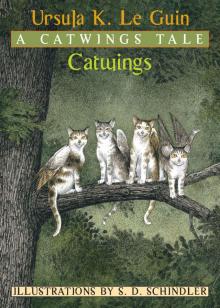 Catwings
Catwings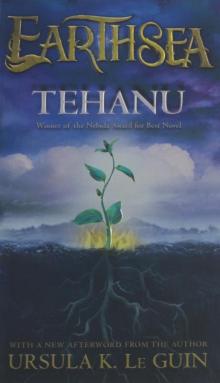 Tehanu
Tehanu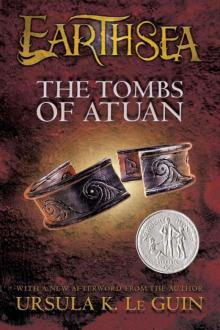 The Tombs of Atuan
The Tombs of Atuan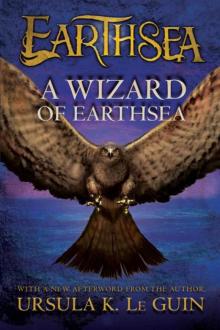 A Wizard of Earthsea
A Wizard of Earthsea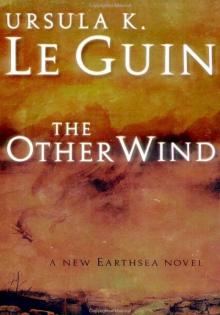 The Other Wind
The Other Wind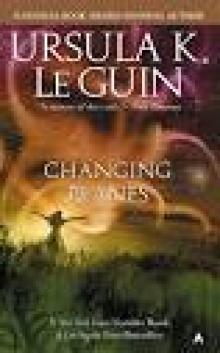 Ursula K. Le Guin
Ursula K. Le Guin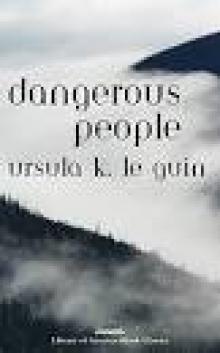 Dangerous People
Dangerous People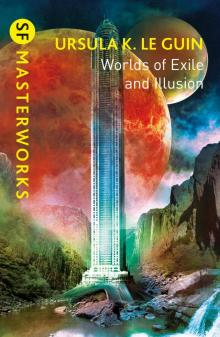 Worlds of Exile and Illusion: Rocannon's World, Planet of Exile, City of Illusions
Worlds of Exile and Illusion: Rocannon's World, Planet of Exile, City of Illusions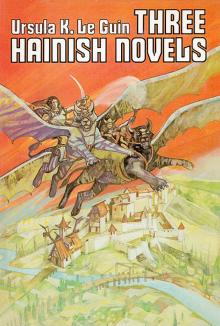 Three Hainish Novels
Three Hainish Novels The Left Hand Of Darkness (SF Masterworks)
The Left Hand Of Darkness (SF Masterworks)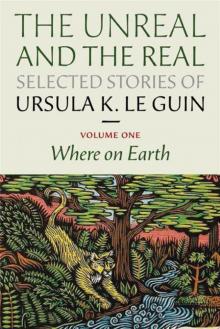 The Unreal and the Real - Vol 1 - Where On Earth
The Unreal and the Real - Vol 1 - Where On Earth The Visionary
The Visionary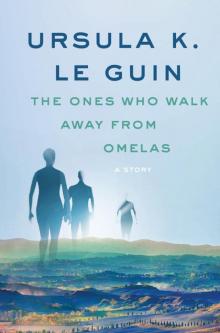 The Ones Who Walk Away from Omelas
The Ones Who Walk Away from Omelas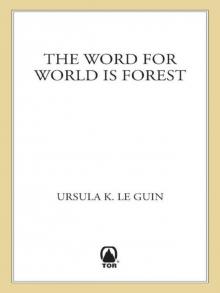 The Word for World is Forest
The Word for World is Forest Always Coming Home
Always Coming Home The Unreal and the Real - Vol 2 - Outer Space, Inner Lands
The Unreal and the Real - Vol 2 - Outer Space, Inner Lands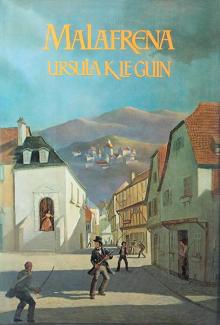 Malafrena
Malafrena The Lathe of Heaven
The Lathe of Heaven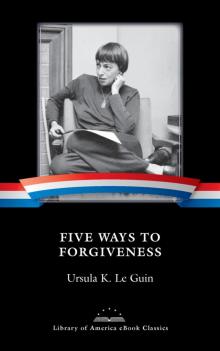 Five Ways to Forgiveness
Five Ways to Forgiveness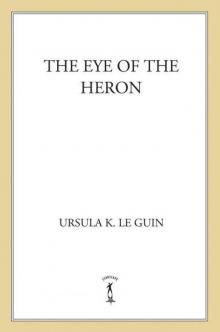 The Eye of the Heron
The Eye of the Heron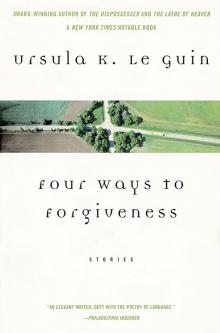 Four Ways to Forgiveness
Four Ways to Forgiveness Powers
Powers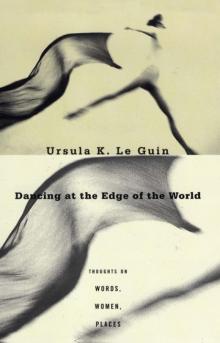 Dancing at the Edge of the World
Dancing at the Edge of the World Very Far Away from Anywhere Else
Very Far Away from Anywhere Else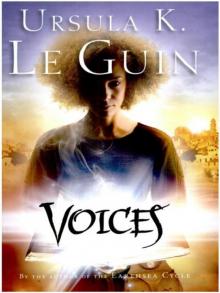 Voices aotws-2
Voices aotws-2 The New Atlantis
The New Atlantis The Unreal and the Real, Selected Stories of Ursula K. Le Guin Volume 1: Where on Earth
The Unreal and the Real, Selected Stories of Ursula K. Le Guin Volume 1: Where on Earth The Telling
The Telling Tehanu (Earthsea Cycle)
Tehanu (Earthsea Cycle)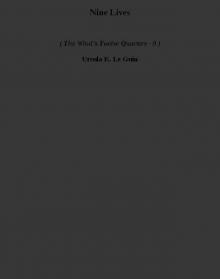 Nine Lives twtq-9
Nine Lives twtq-9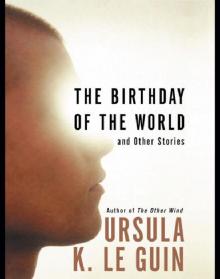 The Birthday of the World and Other Stories
The Birthday of the World and Other Stories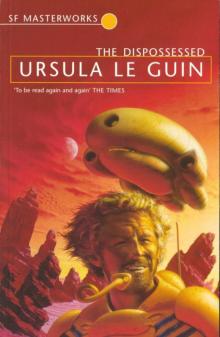 The Dispossessed
The Dispossessed Changing Planes
Changing Planes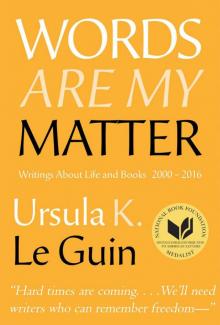 Words Are My Matter
Words Are My Matter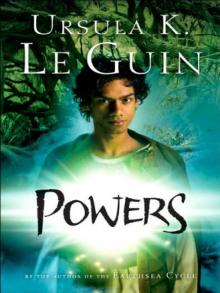 Powers aotws-3
Powers aotws-3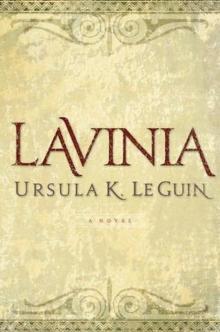 Lavinia
Lavinia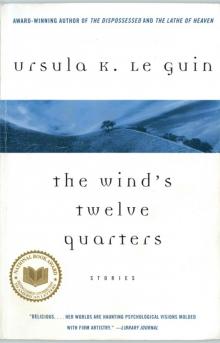 The Wind's Twelve Quarters
The Wind's Twelve Quarters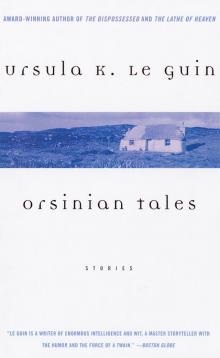 Orsinian Tales
Orsinian Tales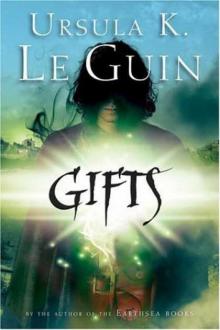 Gifts aotws-1
Gifts aotws-1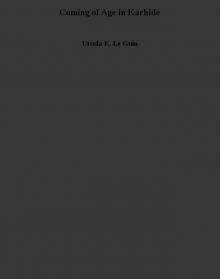 Coming of Age in Karhide
Coming of Age in Karhide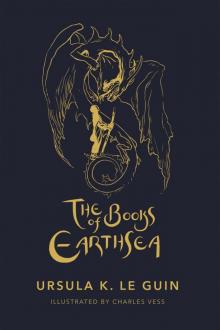 The Books of Earthsea: The Complete Illustrated Edition
The Books of Earthsea: The Complete Illustrated Edition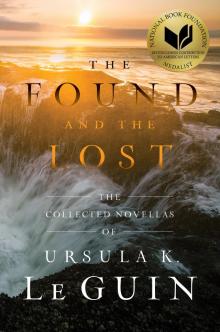 The Found and the Lost
The Found and the Lost No Time to Spare
No Time to Spare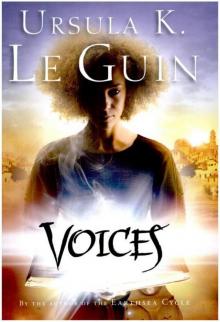 Voices
Voices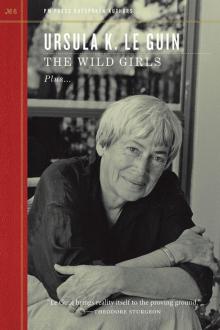 The Wild Girls
The Wild Girls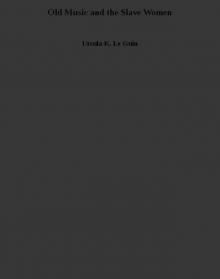 Old Music and the Slave Women
Old Music and the Slave Women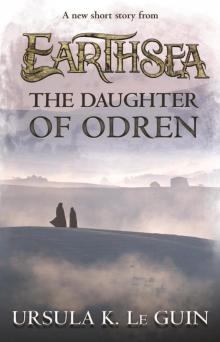 The Daughter of Odren
The Daughter of Odren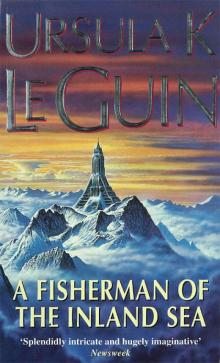 A Fisherman of the Inland Sea: Stories
A Fisherman of the Inland Sea: Stories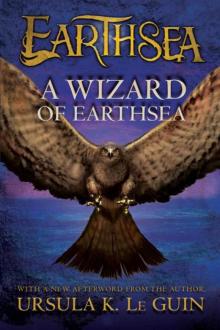 A Wizard of Earthsea (The Earthsea Cycle)
A Wizard of Earthsea (The Earthsea Cycle)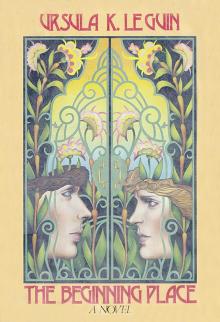 The Beginning Place
The Beginning Place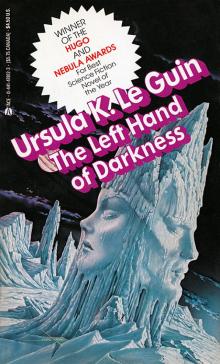 The Left Hand of Darkness
The Left Hand of Darkness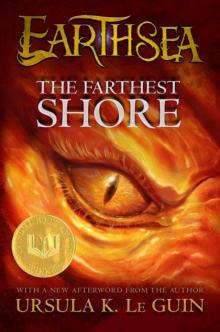 The Farthest Shore (Earthsea Cycle)
The Farthest Shore (Earthsea Cycle) The Matter of Seggri botw-2
The Matter of Seggri botw-2